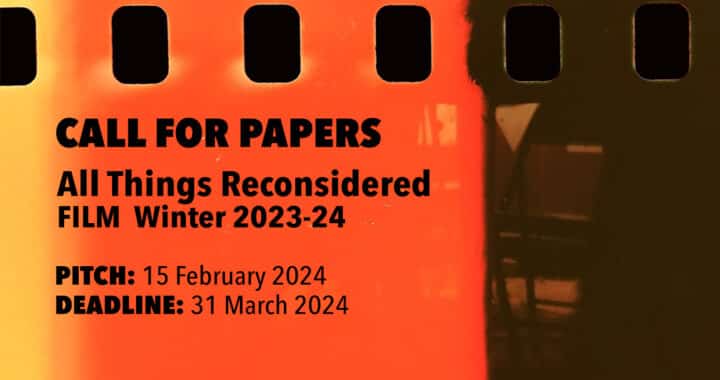Birds are chirping, the sun is shining, and leaves rustle gorgeously in the breeze. Nick Cave and Warren Ellis’ woeful piano score tinkles as director John Hillcoat frames the perfect face of Charlize Theron and then cuts to the movie star profile of Viggo Mortensen in The Road’s opening moments. All’s right with the world. Flowers are in full bloom. Everything seems clean and crisp. But going into the film, you should know that these first images are a flashback of a bygone time in the narrative.
Within minutes, Hillcoat presents The Man (Mortensen) grimy, in a sleeping bag with The Boy (Kodi Smit-McPhee). They are haggard and haunted. All of the color is gone. The leaves and trees have died, giving way to a stark, brutal landscape of hazy grays and browns. “It was a challenge (not working with color) ” said Hillcoat when we met at the loud, posh Soho Grand Hotel in Manhattan. “But the flashbacks were great fun because that was all about finding as much color as we could get.” Throughout the course of The Road, the pair will be searching to recapture that sun-kissed past while dealing with insurmountable odds on their path to the Promised Land.
Something terrible has happened, and something sinister is happening. “The clock stopped at 1:17” describes the narrator following a cataclysmic event. “I think it was October, but I can’t be sure. I haven’t kept a calendar for years.” The Man and The Boy are hunter-gatherers in a post-apocalyptic hell where men roam the streets in gangs. Everything seems dead; what is alive is dangerous.
The Man has two bullets left in his rusty old revolver, and he instructs the child how to position the gun inside his mouth if he ever feels like he’s had enough. This scene of preparing for death by suicide is juxtaposed with a flashback of difficult childbirth as The Boy is brought into the harsh world. A warning: The Road‘s startling intensity can be shocking at times – with roving bands of renegade warriors who kidnap the living to feast on, and it’s every man for himself in this lawless world.
“The cannibal jokes were endless,” said Hillcoat of the mood on the set, insisting that working on a heavy drama was infinitely superior to making a comedy. “For me to hang out with Cormac McCarthy and Nick Cave, the humor and storytelling is just great. Give me a comedy, and man, that’s the most miserable, tragic environment. Give me Cormac any day.”
As with 2005’s excellent The Proposition, director Hillcoat subverts many genre conventions and blends several modes of cinema to create an exciting, dangerous world. Also, as with The Proposition, The Road‘s central characters must contend with a harsh geographical backdrop – The Road takes place in the disaster zone formerly the United States,, while The Proposition is set in the barren, unforgiving wastelands of Colonial Australia. Both films take on the trappings of the Western, the domestic drama, and the post-apocalyptic horror film and are paced with a whip-smart tempo. Both are eventually about destruction and redemption.
There is an element of distaff and off-beat romanticism featured in both films, but in The Road, Hillcoat makes the story more about the passionate bonds of love between a man and his son. “It’s a love story,” said Hillcoat. “He is teaching him what love is. The Boy is born into this hopeless world knowing from that relationship what love is and what’s sensible. And actually, that’s the whole point of the story.”
With The Road, however, Hillcoat offers a unique take on what it means to survive a disaster when almost everybody else has been swallowed up by it. Author Cormac McCarthy (who also wrote the novel No Country for Old Men) chooses to draw his characters as bleak but not yet broken. Hillcoat and screenwriter Joe Penhall continue the novelist’s conversation by asking, “Why do people keep on going in the face of extreme adversity?”
“I had all the guns pointed at me,” said Hillcoat of the challenge presented by The Road’s prestigious pedigree. But Cormac was great about all of that. He understands the medium. He said, ‘ A film is a film. I’ve done my book; you need to do your film.’ He never asked for a script, and we never offered one. He came to the set, and we showed him the finished film, but the key was not to focus on this legacy.”
While The Man and The Boy keep going through the motions, Theron’s character, The Wife, is markedly changed from McCarthy’s story and becomes an addled, depressed symbol of lost hope in the face of tragedy. “You can empathize with her. It’s not like she was just crazy. I think she makes a hell of an argument,” said Hillcoat. “[Charlize] is stunningly beautiful, but she’s also really powerful in this. She has this bravery. We needed that sort of beauty and almost goddess quality. She’s a gutsy woman. By the way, when she was on set during her most harrowing scenes, we never laughed so much. She had the whole crew in stitches.”
Shedding one’s skin and becoming something new is a recurring theme in The Road. There is a mournful shot of The Man letting go of his former life, his wife’s picture, wallet, wedding ring, and identity. None of these things matter anymore in this new world. The surprising way Mortensen plays this scene in such a non-sentimental way and the physical commitment he brings to the part overall indicates his status as one of the most adventurous, talented actors working in film today. In my mind, his contemporaries are Edward Norton, Mathieu Amalric, and Daniel Day-Lewis). As he reflects on his wife’s fate and forges ahead with a new self, the horror on his face signals humankind’s ability to rise from primordial sadness and evil to adapt. You can only beg someone to stay with you so much if they can’t handle the harsh reality, which is what The Man must do with his wife.
Mortensen’s performance is a wonderful actor whose instrument becomes more finely tuned with each new venture. Using his entire body to signal pain, but particularly wielding his glassy eyes like sharp little weapons, the actor captures a cagey yet hopeful spirit, a good man in a worst-case scenario trying to do what he can to get by. Mortensen is stoic, brimming with quiet fury like the greatest leading men in classic Hollywood westerns.
“He throws himself one hundred and ten percent into a role. It’s very intense,” said Hillcoat. “And it’s an intense role. But that’s also what’s great about him, that hundred and ten percent. There was only one thing that I was irritated with: he was on a diet of chocolate, really dark chocolate, and red meat. That’s it. He brought all these great chocolates from everywhere and shared them with the crew. I’m still addicted to dark chocolate. I can’t get away from it.”
At key moments, Hillcoat’s The Road resembles some German Romantic paintings, such as 1809’s Abbey Among Oak Trees and Monk by the Sea (1808), by Caspar David Friedrich, with cinematographer Javier Aguirresarobe (The Others, 2001 and Talk to Her, 2002) evoking the funereal textures and dour colors of Friedrich’s palette (“He’s an artist” rhapsodized Hillcoat, talking about the cameraman’s work on Pedro Almodóvar’s film). In both the paintings and the film, there is a turbulence in the washed-out grays, bruised purples, and ashen browns, and the tone of Hillcoat’s direction is painterly and expressive, and Hillcoat cites photographs from recent disasters such as Hurricane Katrina-ravaged New Orleans and the 1948 film Bicycle Thieves as other visual reference points.
Ultimately, The Road is less about style than the triumph of optimism and trust. Good things can often follow if you can make it through the day, even in the worst circumstances. Life is hard. Few of us have it easy, but The Road shows that if those who have everything lose in a disaster, we can still make it out alive. We can live to fight another day. Our natural survival instinct kicks in when we are left alone by those who love us most. Not even death or the destruction of the world can stop that.
Hillcoat is preparing for his next feature film, written once again by Nick Cave. “It’s a gangster film, its period,” said Hillcoat guardedly, adding that the cast will include Shia LaBeouf, Ryan Gosling, and “a couple of others of that caliber.”

![Call for Papers: All Things Reconsidered [MUSIC] May-August 2024](https://www.popmatters.com/wp-content/uploads/2024/04/all-things-reconsidered-call-music-may-2024-720x380.jpg)



